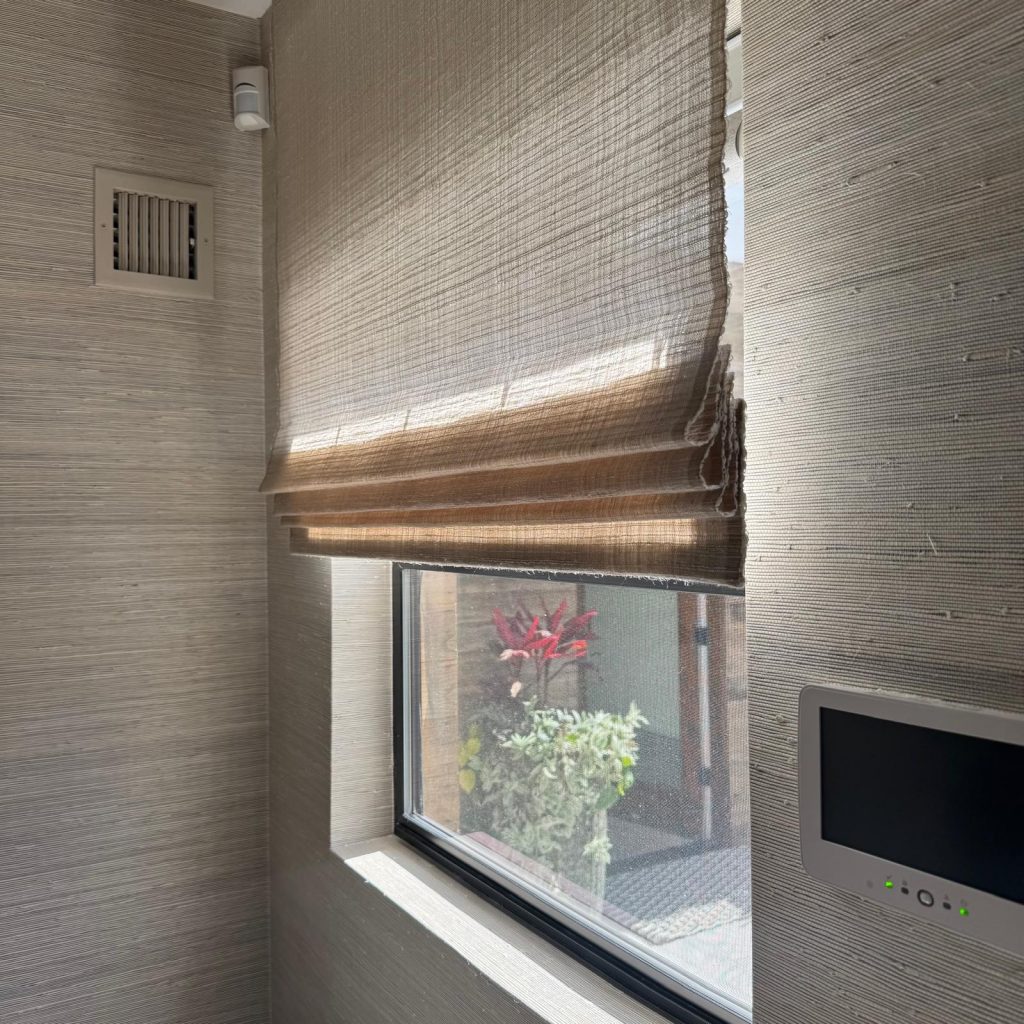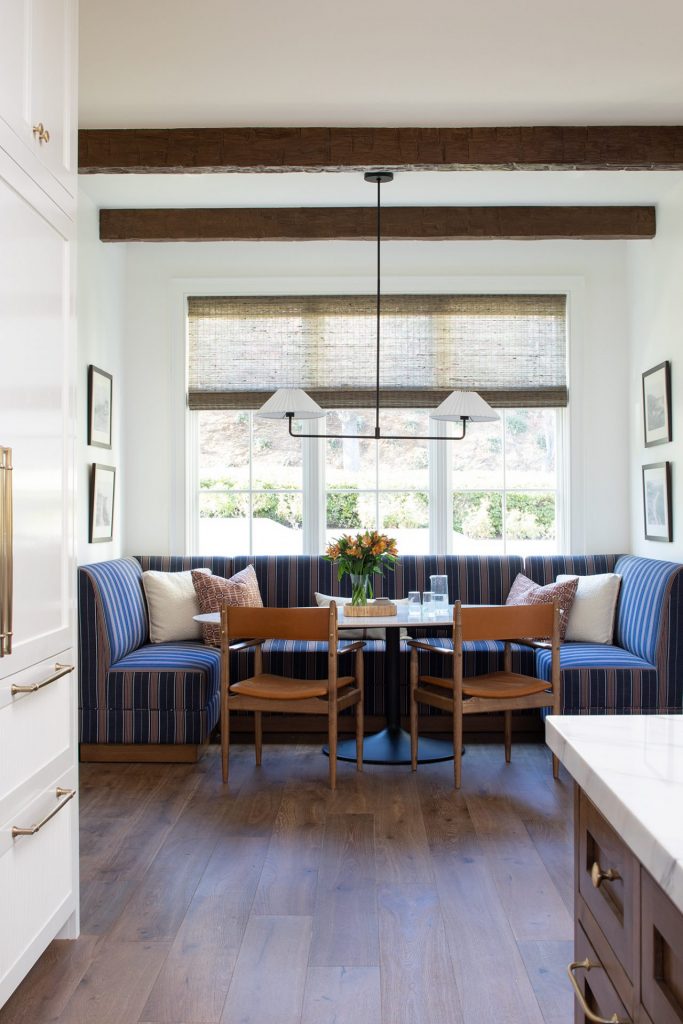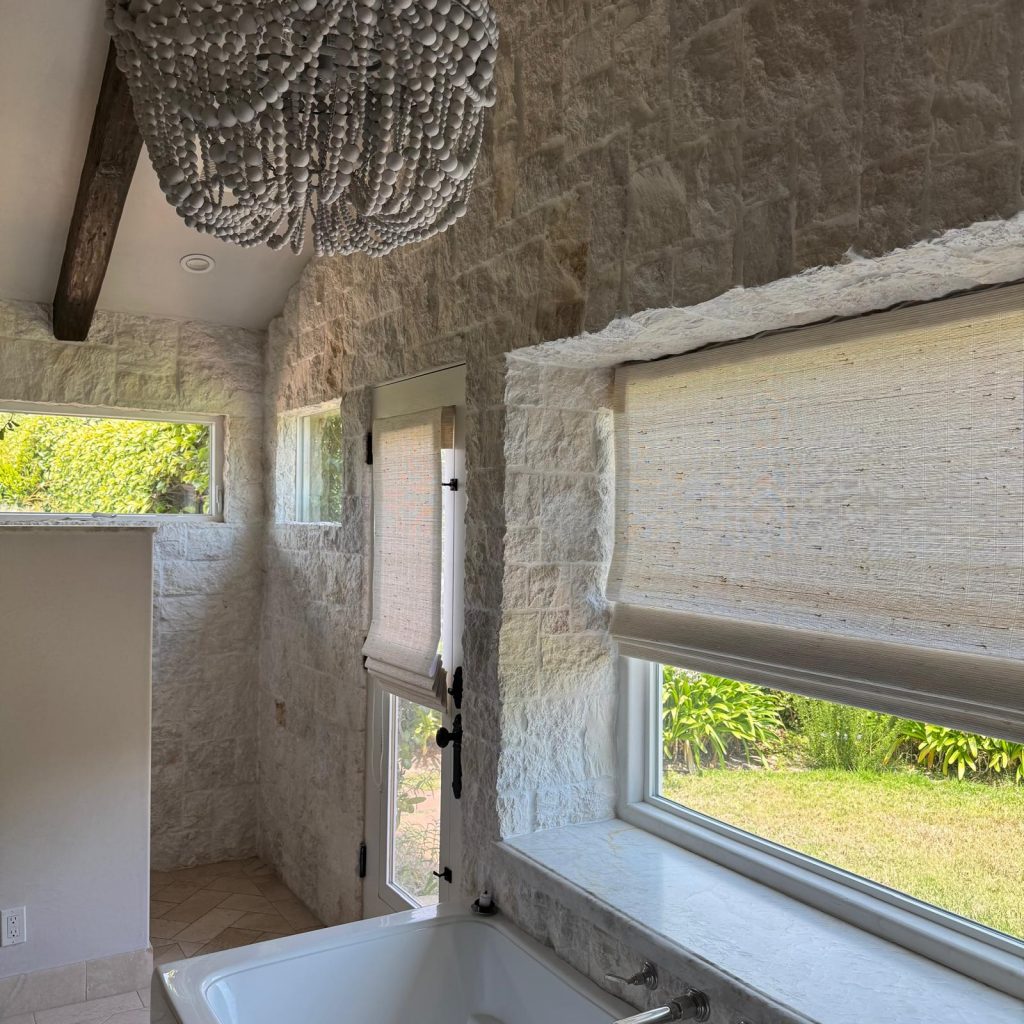
Natural Woven Shades: bamboo, grassweave and liners
What are natural woven shades bamboo grassweave and liners, and why do they suit Los Angeles rooms?
Natural woven shades bamboo grassweave and liners bring texture and a calm mood to bright interiors. Instead of a flat textile, you get materials such as split bamboo, reeds, grasses, and jute. Sunlight slips through the weave, softens hard edges, and makes white walls, plaster finishes, and oak floors feel warmer. Every roll shows small variations because the fibers are real. That is the appeal. In everyday use, natural woven shades work in living rooms where glare changes by the hour, in primary bedrooms that need quiet, and in breakfast nooks that feel unfinished without a light filter. Add the right liner and they handle privacy at night without losing that easy daylight glow.
Bamboo woven shades vs grassweave window shades, how do they differ in look and light?
Ripplefold vs pinch pleat is a style decision first. Ripplefold drapery reads minimal and architectural, great with slim baseboards and clean cabinetry. Pinch pleat is dressier and sculpted. If you want a modern, continuous wave with a small stack and smooth travel, ripplefold drapery wins. If you want pronounced pleats and a traditional edge, pinch pleat is the pick.


Which liner suits natural woven shades best, privacy liner vs blackout liner?
The liner sets the night behavior of the shade. Privacy liner vs blackout liner is a simple choice if you think about how the room works after sunset. A privacy liner softens view through, blurs silhouettes, and lets the woven face glow gently in the evening. That suits living rooms and dining rooms where a little light is welcome. A blackout liner stops street light and morning sun, protects the face fabric from UV, and makes a bedroom or media room feel settled. Both sit behind the weave, so the natural front stays visible during the day. If you want a little more hush, add interlining with the blackout. The hand of the shade feels richer and the folds stack neatly.
Inside or outside mount for woven wood shades Los Angeles homeowners love?
Inside mount looks built in when the frame is square and deep enough for the headrail and the stack. It shows the trim reveal, keeps walls clean, and suits newer Los Angeles construction. Outside mount overlaps the opening. That helps with light control in bedrooms, forgives uneven frames in older bungalows, and raises the visual height of the window when you start the shade above the opening. For sleep, outside mount plus a blackout liner is often the most reliable path. For view rooms, inside mount frames the horizon with a tidy edge and keeps the glass feeling open.
Pairing natural woven shades with drapery or solar rollers without losing the look
Layering keeps each part light and efficient. A common plan places a natural woven shade inside the frame for daytime filtering and a soft drapery outside for night privacy and better edge coverage. Another plan adds a solar roller for glare on screens during the day and uses a lined bamboo or grassweave panel for warmth at night. The key is restraint. Let the woven texture lead. Choose a drapery color that is a touch warmer or cooler than the shade so the two read as a set. Keep hardware tidy so the eye lands on the texture, not the brackets.
Color, edge banding, and hardware for bamboo woven shades and grassweave window shades
Color is where woven wood shades Los Angeles projects become personal. Sand, straw, honey, and charcoal sit well with white oak floors and pale walls. Darker faces reduce bounce and outline outdoor detail. Lighter faces float in the room and keep mornings bright. Edge banding protects hems and adds a slim tailored line. You can match the band to the face so it disappears or choose a gentle contrast to frame the shade. At the top, a compact headrail or a fabric valance hides the lift system. On long runs, a two on one headrail splits weight so everyday lifting is easier and motors work with less strain.
Care, durability, and coastal notes for natural woven shades bamboo grassweave and liners
Natural woven shades are sturdy when treated well. Vacuum with a soft brush and spot clean gently. Keep them out of steam and direct splash. In bathrooms, place a woven shade away from the shower and consider a vinyl backed liner if humidity is high. Near the coast, salt air can stress exposed metal. Powder coated hardware and stainless fasteners last longer, and a quick wipe after windy weeks keeps everything smooth. Small changes in the weave over time are normal and part of the material story. If you host guests or rent seasonally, plan a simple checkup to tighten brackets and confirm that lift limits or motor limits are still set correctly.
Where woven wood shades Los Angeles installs make the biggest difference
Start with rooms that swing between bright and too bright. Think living rooms with west glass, street facing bedrooms that need real privacy at night, and dining areas with noon glare on the table. In those spaces, natural woven shades bamboo grassweave and liners do a lot without bulk. They keep daylight pleasant, add quiet texture, and stay easy to use. In Pacific Palisades hillside rooms, a darker bamboo woven shade trims glare while keeping the canyon line clear. In casual kitchens, a light grassweave window shade with a privacy liner keeps mornings calm without exposing the sink area after dark.
Thinking About Natural Woven Shades?
Bamboo and grassweave bring texture without adding visual weight. If nights matter, choose a privacy liner or a blackout liner so the room works the way you live. Want a quick gut check on weave, color, and edge details for a home in Los Angeles, Malibu, Pacific Palisades, or Orange County? Send us a quick message, and we’ll guide you to a mix that feels warm, practical, and easy to live with.
